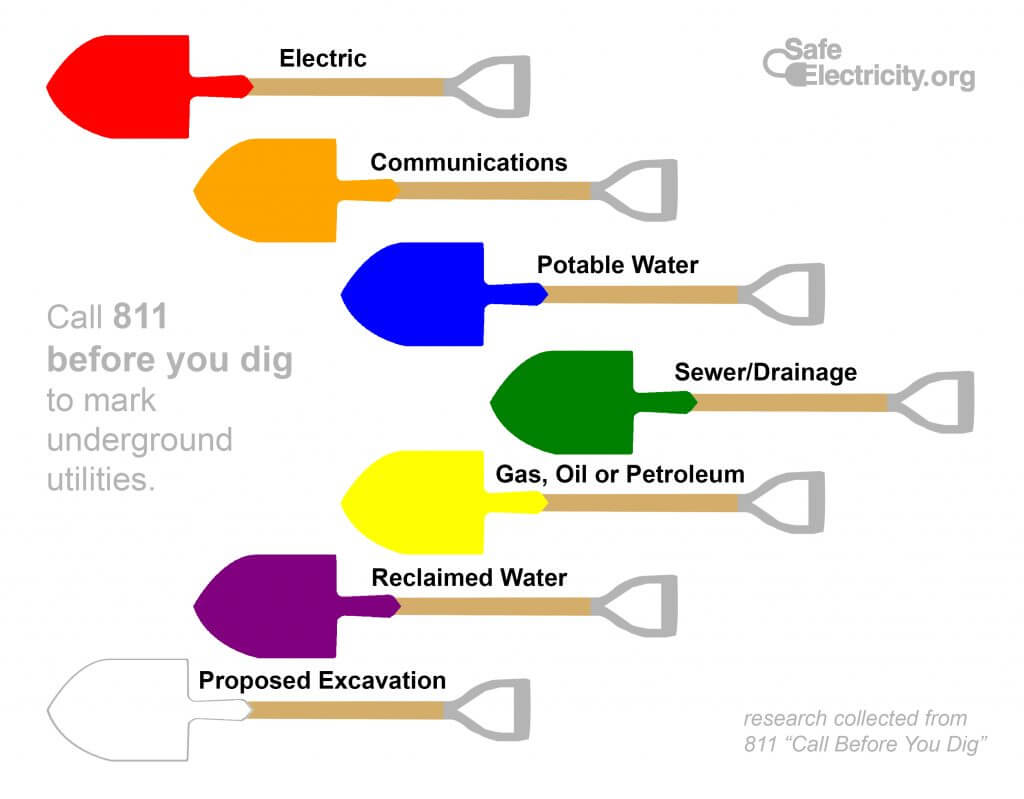Contractor Safety
We understand that many contractors work throughout our distribution system to assist members with their electrical needs. It’s important to understand the risks and dangers of working near electricity and how to stay safe near utility equipment.
Overhead Power Lines:
- When operating equipment near power lines and poles, remember to “Look Up & Live!” Machinery can easily come into contact with overhead power lines if you aren’t aware of your surroundings. Once machinery becomes the path to ground, electricity will travel through the machinery, resulting in severe injuries or death.
- Overhead power lines can carry electricity at different voltages, none of it being safe to come into contact with. Even if you see overhead power lines on the ground after a storm or other reasons, always assume power lines are energized.
- Overhead power lines require 10 feet of clearance in all directions. This distance rule applies to the power lines draped from pole to pole that line roads (distribution lines), as well as the drop-down lines that service homes or other structures.
- Follow all OSHA distance requirements when operating dump trucks, cranes, concrete pump truck extensions and when working on a roof or in a bucket.
- If your employer asks you to trim trees, do not trim any foliage or limbs within 10 feet of a power line in any direction (20 feet is better!) Trimming near power lines should be left to OSHA-certified line clearance workers.
- If you operate farm machinery or drive a truck that has hydraulic beds or lifts (dump truck, for example), bins (grain truck) or arms/extensions (garbage truck, concrete truck), always be aware of power line locations and use a spotter. Contact with a power line can kill. If your truck, tractor or equipment does come in contact with a line, DO NOT get out. Call 9-1-1 and wait for us to de-energize the power so you can safely exit.
Underground Power Lines:
- Power lines that are buried underground pose just as high as a danger as overhead lines. People may think because power lines are underground that they are safer. Excavators, shovels, or other tools and equipment hitting underground power lines are extremely dangerous. Don’t touch any piece of equipment that comes into contact with a power line. Watch a short video to learn about what to do if you hit an underground power line with a piece of equipment.

- If you plan to do underground work in an area, remember to call Diggers Hotline at 8-1-1 or 1-800-242-8511 at least three business days prior to performing the work. This gives them time to get to the location and mark for underground facilities. Remember, Diggers Hotline does not mark private facilities. A few examples include underground sprinkler systems, invisible fences, and private water systems.
- If you accidentally come in contact with an underground utility, do not bury the problem. Your first priority should be evacuating the area for safety. It can be difficult to locate exactly where a problem is after the damage occurred and was buried. Damage to some underground utilities can cause dangers and inconveniences miles away from the actual site of the damage.
- Small nicks in underground wires can be expensive, but necessary, to fix. If you nick an underground utility, notify your utility provider. Do not attempt to fix the problem yourself.
- Beneath every site may be a network of utility lines — electric, water, gas and telecommunications. Striking these lines can cause costly delays, expensive repairs, service disruptions to the community, and most importantly, serious injury or death.
Preparing For The Job:
Make sure you are compliant with OSHA electrical safety regulations. Learn more about tree trimming, herbicide spray, and more on our Right of Way Clearing page.
When reviewing the details for your next job, add these questions to your next project and review with others:
- Where is the nearest overhead power line?
- Where is all utility equipment located?
- Have underground facilities been marked properly?
- Do we need power lines or utility equipment moved to safely do our job?
- Have we reviewed this information with our crew?
- If materials need to be stored on site for the job, are the in a safe place away from overhead power lines or utility equipment?
Locating Underground Facilities:
Different colored flags or paint on the ground will indicate what facilities have been located underground. Use these color sheet as a reference to know what facilities you are working near. If there are private underground facilities, the facility owner is responsible for getting these marked and located.
Remember, if you hit an underground power line, give us a call at (800) 831-8629.




